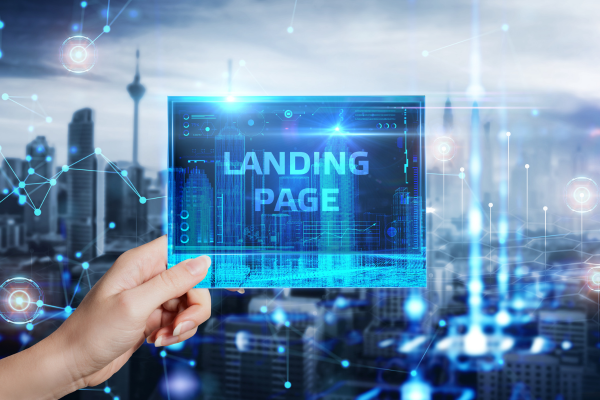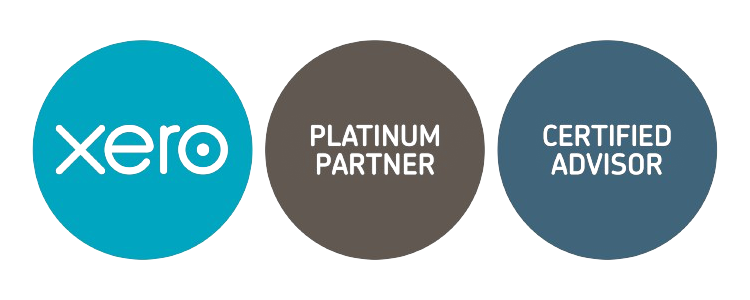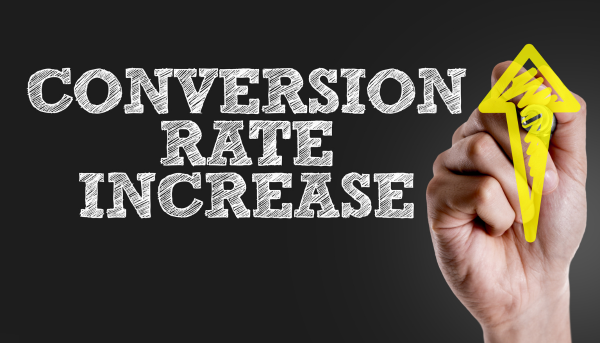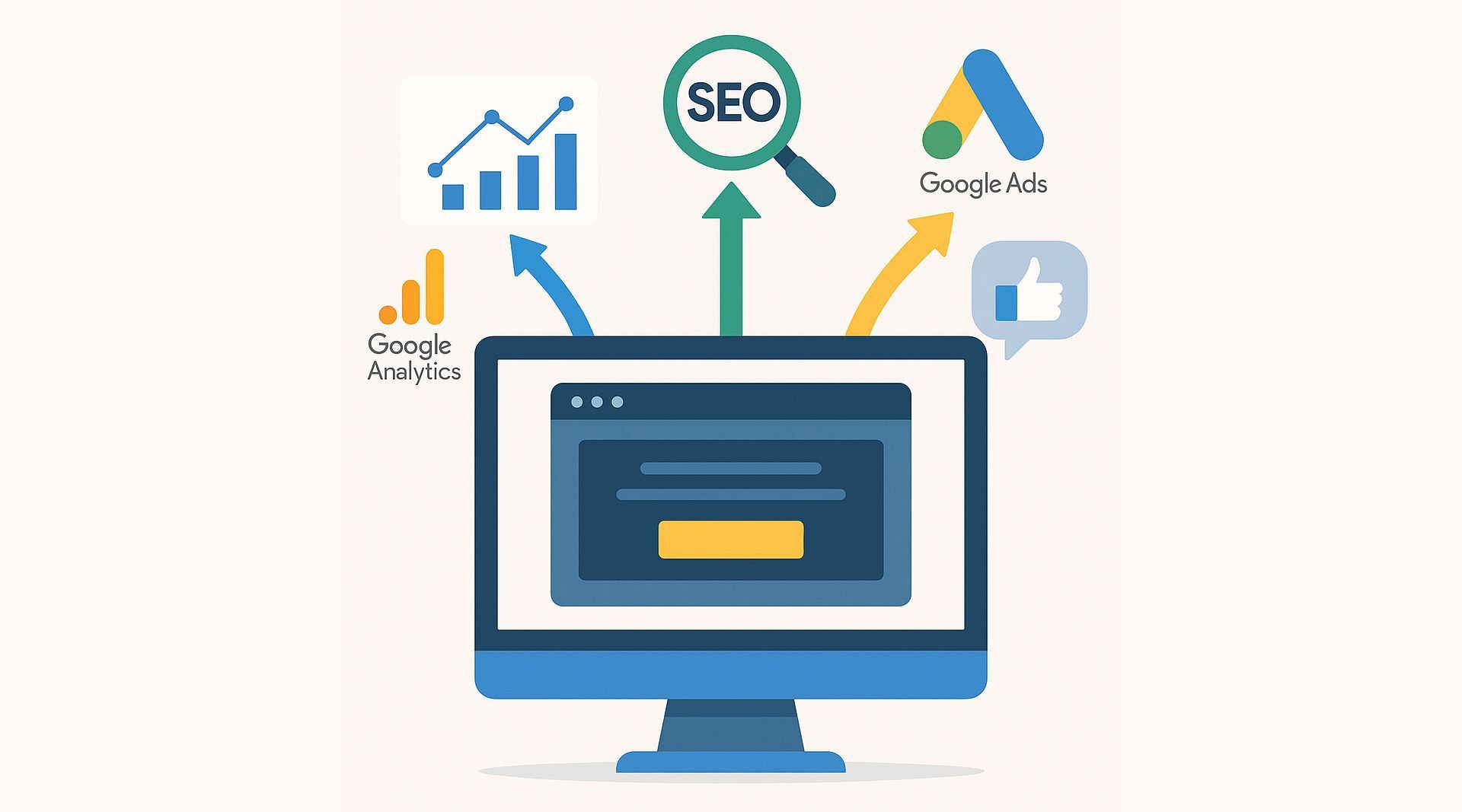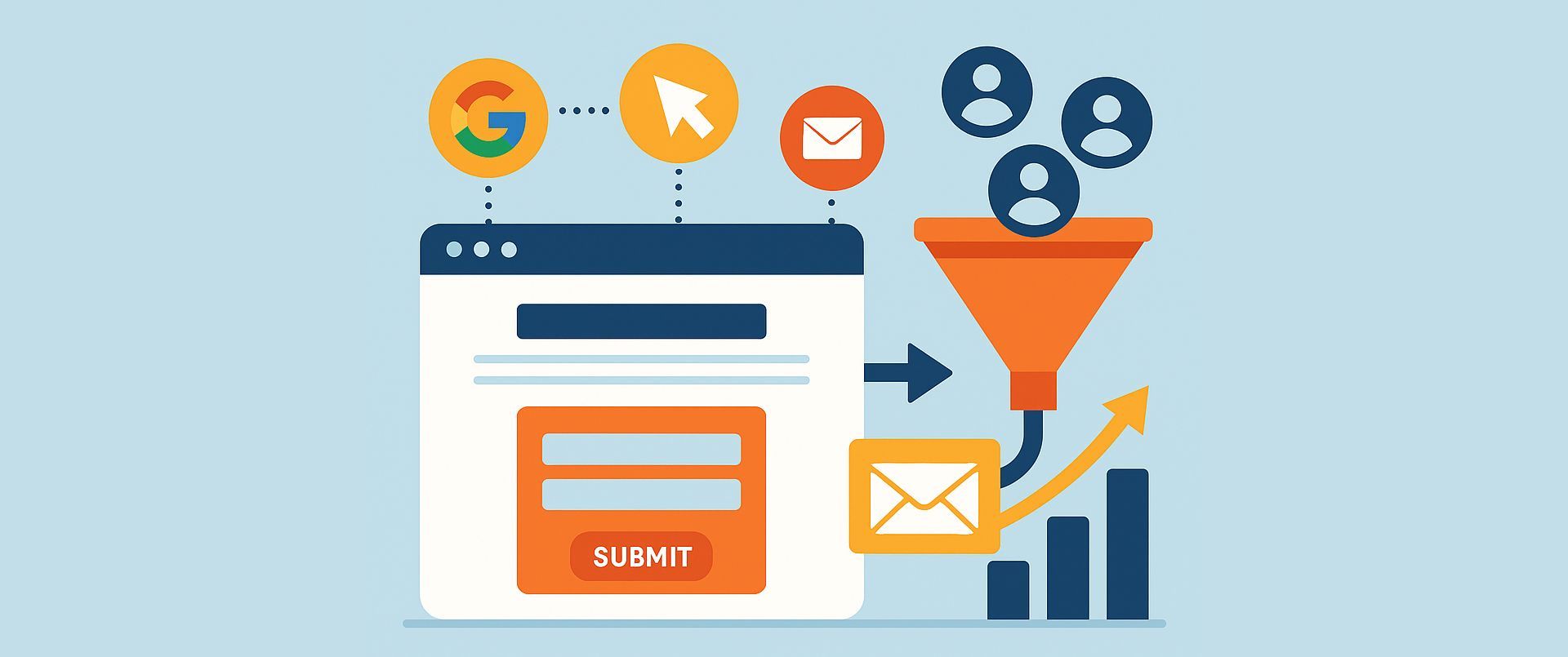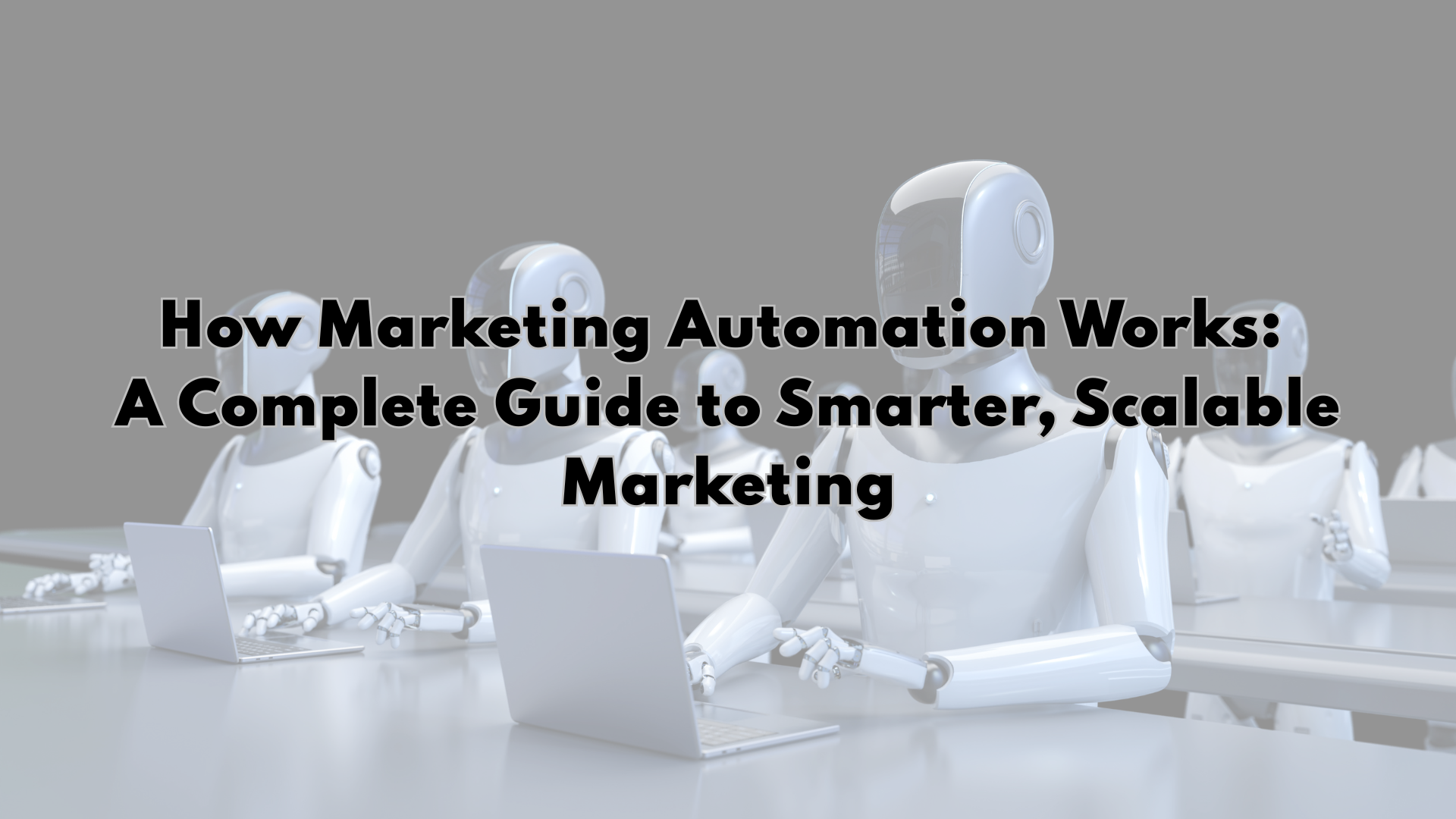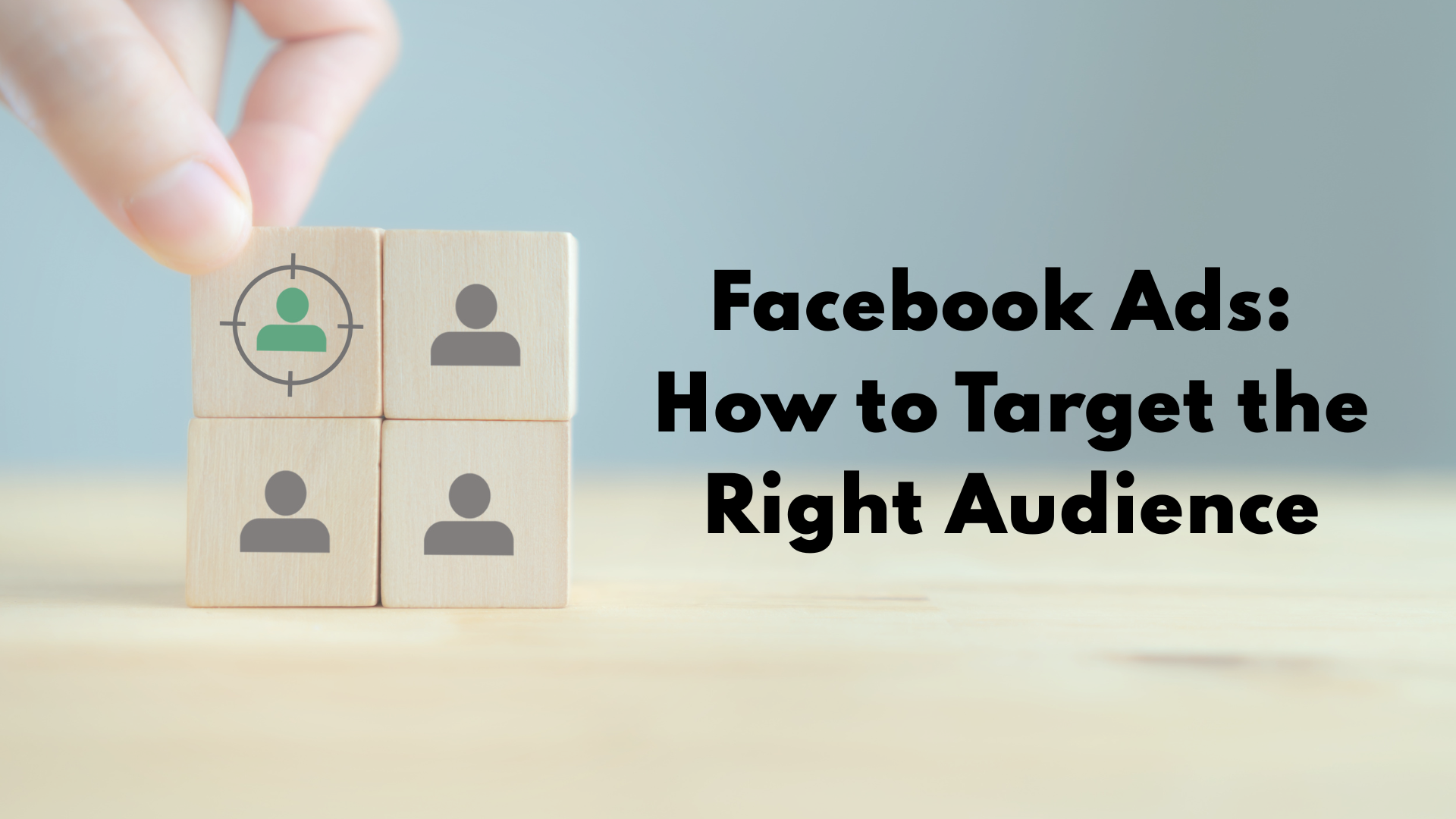CFO GROUP INTEGRATED SERVICES
What Is a Landing Page And Why It Converts Better Than Your Website
CMO Media Lab Pte Ltd • May 6, 2025
In the ever-evolving digital landscape, the first impression your business makes can mean the difference between a lost prospect and a loyal customer. While a website serves as a digital storefront, it is the landing page that truly captures attention and converts interest into action. Many assume that a sleek website suffices, overlooking the unmatched specificity and focus of a well-crafted landing page.
Unlike homepages that often serve as broad overviews, landing pages are specifically designed to prompt immediate decisions with targeted messaging and compelling visuals. They cater to the direct needs of a campaign, a product, or even a singular event, streamlining the path from interest to interaction. Understanding that businesses thrive on converting traffic into tangible outcomes, the spotlight is firmly on the strategic implementation of landing pages.
In this article, we delve into the critical role landing pages play in enhancing conversion rates, gaining audience insights, and maximizing marketing efforts. We will explore the various types of landing pages, their essential elements, and best practices for design. Discover why every business, regardless of its current web presence, should integrate landing pages into its digital strategy to achieve unparalleled marketing success.
From Click to Customer: What a Landing Page Really Does
Landing pages are vital tools in digital marketing. They play a key role in converting visitors into leads or customers. With concise and focused content, a well-designed landing page guides a visitor toward a specific action. Whether you're collecting email addresses for a newsletter or promoting a new product, landing pages are essential. They aim at a single goal, unlike other web pages that may cover multiple topics.
Understanding what is a landing page is the first step in building a strong digital marketing foundation. A landing page is not just another section of your website—it’s a standalone webpage created with a clear objective. Whether you're aiming to capture leads, promote a product, or encourage sign-ups, these pages are critical for guiding website visitors toward a desired action without distraction.
Definition and Purpose
A landing page is a stand-alone web page created for marketing campaigns. It serves one main purpose: conversion. By driving visitors from ads, emails, or social media posts to a landing page, businesses can increase conversion rates.
This type of page is crucial in marketing as it targets a specific audience with tailored content. Using landing pages is ideal when launching a new campaign, promoting events, or gathering customer information. The importance of landing pages in marketing cannot be overstated, as they simplify the customer's decision-making process and enhance overall marketing efforts.
Homepage vs. Landing Page — Which One Sells Better?
While landing pages and homepages both exist on a company's website, they serve different purposes. A homepage acts like a company's main hub, providing a broad overview of the business. It contains navigation menus directing users to various sections like products, services, and contact information. On the other hand, a landing page focuses on one specific goal. It has limited navigation and is designed to keep visitors concentrated on the desired action.
Homepages cater to a wider audience, introducing them to different aspects of a brand. In contrast, landing pages are tailored to a targeted audience, catering to specific interests or needs. This makes landing pages effective in driving higher conversion rates. While a homepage might see high traffic, it can also have a high bounce rate if users don't find what they're looking for quickly. A landing page's streamlined design helps retain potential customers, guiding them effectively down the marketing funnel.
Why Homepages Distract and Landing Pages Convert
Your website’s homepage serves many functions, but it’s not designed to convert like a landing page. Homepages distract users with multiple links and options. In contrast, a standalone page built for a single offer will keep visitors focused, which is vital for achieving high conversion rates and meeting the goals of your marketing efforts.
Build Landing Pages That Guide Visitors to Take Action
If you're running paid ads or email campaigns, it’s crucial to build landing pages that eliminate distractions and focus on one clear goal. Unlike a homepage, these dedicated pages help streamline the user journey, keeping attention on the CTA and making it easier for prospects to take the next step. Whether you’re offering a free consultation or promoting a product, a well-built landing page sets the foundation for higher conversions.
The 4 Types of Landing Pages You Need to Grow Faster
Choosing the right landing page type depends on your marketing campaign's objective. Each type is crafted to meet a specific intent, designed to boost conversion rates and appeal to your target audience. Let’s explore the different kinds you can use to optimize your marketing.
Lead Generation Pages
Lead generation pages are designed to gather personal information from visitors, often in exchange for something valuable. These pages are also known as “lead capture pages.” They usually request details like names, phone numbers, or email addresses. The primary purpose is to convert casual visitors into leads that can be nurtured over time.
Effective landing page design here is crucial. A well-designed landing page for lead generation will often offer valuable content, such as a free e-book or exclusive access to a webinar, to entice users to fill out a form. Using social proof like testimonials can also increase credibility. Many companies use landing page builders to make these pages, as they offer landing page templates and tools to optimize conversion rates.
Click-Through Pages
Click-through pages serve as a middle step between ads and actual checkout pages. Their primary aim is to provide enough information about a product or service to push a potential customer to the next step. These pages are usually simpler, with less content than lead generation pages. Typically, they feature a clear call-to-action button directing users to a sales page.
The idea is to provide just enough detail to nudge users to take the needed action. These pages often eliminate navigation menus to keep the user focused on the conversion goal. An effective click-through page can significantly reduce the bounce rate and improve the effectiveness of your marketing campaigns.
Event Registration Pages
Event registration pages are crafted to collect sign-ups for webinars, conferences, or other events. they play a crucial role in marketing efforts focused on event attendance and participation. They often feature prominent calls to action and highlight key event details like date, time, and location.
A successful landing page for event registration may also include elements of social proof, like displaying logos of past attendees or organizations involved. Providing clear, concise information ensures potential attendees understand the value they will gain from the event. Simplifying the registration process through user-friendly forms can lead to higher conversion rates.
Thank You Pages
Thank you pages appear right after someone completes a desired action, such as signing up for a newsletter or making a purchase. While they seem simple, they serve as an important engagement tool. These pages can confirm successful conversions, but they also offer opportunities for further interaction. Including a message of gratitude can make users feel valued.
A thank you page can guide users toward other kinds of valuable content or suggest actions like following a social media post. They can act as a bridge, keeping users engaged within your marketing funnel. Incorporating next steps or related offers can maximize the benefits of the traffic source that led visitors there in the first place.
Top Benefits of Using High-Converting Landing Pages
Unlike a homepage, a landing page focuses on a single goal, such as collecting email addresses or promoting a product. This concentrated effort helps in guiding users along the marketing funnel. By using well-designed landing pages, businesses can increase their conversion rates and engage their target audience more effectively.
Enhanced Conversion Rates
One of the primary benefits of landing pages is their ability to enhance conversion rates. A high-converting landing page is designed with a specific action in mind, such as signing up for a newsletter or downloading a white paper. Landing pages guide users toward a specific goal by eliminating distractions like navigation menus and focusing on clear calls to action. Successful landing pages often incorporate social proof, such as testimonials or reviews, to build trust with potential customers. As a result, these pages are effective at turning traffic into valuable leads.
Gaining Valuable Audience Insights
Landing pages also provide opportunities to gain insights about your audience. Marketers can better understand what resonates with their target audience by analyzing metrics such as bounce rate and conversion rates.
Furthermore, the data gathered can inform future marketing campaigns and optimize landing page content. Tools like landing page builders offer analytics that track the effectiveness of different landing page designs. This feedback loop allows businesses to continually refine their messaging and approach, tailoring content to meet the needs and expectations of their audience.
Tailoring Messaging to Specific Campaigns
Landing pages allow businesses to tailor messaging to suit specific marketing campaigns. Each type of landing page can feature customized content that aligns with the campaign’s goals. This targeted approach ensures that the messaging is relevant and engaging to the audience.
For instance, a landing page for a social media post might focus on a specific product promotion. This specificity makes the landing page more effective, as it speaks directly to potential customers' current interests and needs. Ultimately, this tailored approach enhances engagement and conversion.
Improving Marketing ROI
Investing in landing pages can significantly improve your marketing ROI. By directing traffic from a search engine, email campaign, or social media post to a dedicated landing page, businesses can maximize their marketing efforts. This targeted strategy reduces wasted resources by ensuring that each visitor is presented with valuable content aligned with their interests. As conversion rates increase, so does the return on investment. Additionally, utilizing landing page templates and effective landing page design, businesses can streamline their workflows and amplify the impact of their marketing campaigns.
Why Landing Page Templates Can Make or Break Your Campaign
A successful landing page is designed to convert visitors into leads or customers. It is focused on a single goal and tailored to the target audience. Unlike a homepage, a landing page is stripped of distractions. It doesn't have navigation menus or links that could lead users away from the intended action.
The core elements of a successful landing page include compelling visuals, persuasive copy, trust-building features, and a clear call-to-action (CTA). Avoiding common mistakes, such as overcrowded content or unclear messaging, is crucial. A high-converting landing page speaks directly to potential customers, guiding them smoothly through the marketing funnel. A well-designed landing page can greatly improve conversion rates by creating a focused and engaging user experience.
Compelling Visuals That Stop the Scroll and Build Trust
Visuals play a vital role in any landing page. They capture attention, convey messages, and evoke emotions. High-quality images and videos should be relevant to the offer and audience. The visuals must support the landing page’s goal and complement the copy. Consistent branding through visuals also helps build recognition and trust with visitors.
A common mistake is using stock photos that appear inauthentic, creating more skepticism than interest. Instead, opt for original images that resonate with your audience. Color schemes should guide users’ eyes towards the CTA, enhancing the overall navigation. With the rise of mobile users, ensure visuals load quickly and look good on smaller screens.
Persuasive Copy That Pulls Readers Toward Action
The success of a landing page heavily relies on persuasive copy. The text should be clear and concise, aimed directly at the target audience's needs and desires. Writing in simple language helps keep visitors engaged. It’s important to highlight the offer's benefits, not just the features. The headline grabs attention, while subheadings break down information.
Every paragraph should lead visitors closer to the CTA. Avoid jargon and keep sentences short for easy readability. An error to avoid is overwhelming users with too much information. Focus on the key points that emphasize the value of what you’re offering. An effective landing page has enough content to inform and motivate without overwhelming readers.
Trust-Building Elements
Trust is a crucial element in encouraging conversions. Trust-building elements can reassure visitors, making them more likely to complete the desired action. Customer testimonials and client logos serve as social proof. They show potential customers that others have trusted and benefited from the offer.
Certifications, badges, and security seals help alleviate concerns, especially when personal information or purchases are involved. Another mistake to avoid is a lack of transparency. Include clear contact information and privacy statements. Offering a preview or sample can demonstrate the value of your offer without any risk to the visitor. These elements create confidence and increase the likelihood of a successful conversion.
CTAs That Get Clicked — Not Ignored
A clear and compelling CTA is the linchpin of any landing page. The CTA directs visitors on what action to take next. It should be visible, often contrasting with the rest of the page, to draw attention. Use action-oriented language that urges visitors to click, sign up, or purchase. Words like "Get Started" or "Claim Your Offer" work well.
Ensure the CTA is concise and directly related to the content and offer. A common pitfall is burying the CTA among other elements, which can be confusing. Always test different variations of CTAs to see which converts better. A CTA is most potent when it aligns with user intent and is supported by a seamless, distraction-free user experience.
Landing Page Best Practices You Can’t Afford to Ignore
Designing an effective landing page is crucial for capturing potential customers and boosting conversion rates. A well-designed landing page can make all the difference in your marketing efforts. It focuses on a single goal: collecting email addresses or promoting an event.
Harnessing best practices in landing page design can enhance your marketing funnel and drive better results. Successful landing pages are streamlined, engaging, and devoid of distractions. They provide valuable content and a clear call to action, nudging users toward the desired outcome. Let's explore key strategies to refine your landing pages for maximum impact.
A/B Testing That Doubles Your Conversion Rate
A/B Testing That Doubles Your Conversion Rate
A/B testing is a powerful method to optimize your landing page's performance. By creating two versions of a page, you can see which one works better with your target audience. This testing lets you tweak elements like headlines, images, and call-to-action buttons.
For instance, changing the color of a button or the placement of text can influence user behavior. A/B testing helps fine-tune your landing page, leading to higher conversion rates. Continuously test various elements to find a design that resonates the most with your visitors. This approach ensures that your landing page remains effective over time.
Minimalist Design: Less Clutter, More Sales
A minimalist design approach can significantly enhance the effectiveness of your landing pages. Removing unnecessary elements that may distract visitors from the main goal is essential. A clean, straightforward layout helps potential customers focus on what truly matters, like a compelling call to action. Limiting navigation menus and excess content creates a more direct path for users.
This approach also simplifies your visitors' decision-making process, improving conversion rates. By embracing minimalist design principles, your landing pages can become high-converting tools in your marketing strategy.
Mobile Optimization: Don’t Let Your Page Kill Sales on Phones
Optimizing your landing page for mobile users in today's digital age is crucial. Many potential customers access content through smartphones and tablets. Hence, ensuring your landing page design is responsive is essential. Mobile optimization involves adapting your landing page to deliver a seamless experience on smaller screens. Focus on readable fonts and easily tappable buttons to enhance user interaction.
Additionally, fast loading times are essential to reduce the bounce rate. By optimizing for mobile, you cater to a larger segment of your audience, making your marketing campaigns more inclusive and effective.
Don’t Let Mobile Optimization Be an Afterthought
With more than half of global traffic from smartphones, designing for mobile devices is no longer optional. A good landing page adapts seamlessly to different screen sizes and ensures that your call-to-action CTA buttons are thumb-friendly. Prioritizing mobile responsiveness contributes to a well-optimized landing page and ultimately improves conversion rates.
Each Campaign Needs Its Own Landing Page. Here’s Why.
Creating separate landing pages for different campaigns allows you to fine-tune your message for specific audiences. For example, a free trial landing page will have different content than one promoting an eBook. Building landing pages tailored to your target persona improves performance metrics like bounce rate, engagement, and conversion rates. This also contributes to more well-optimized landing page experiences across devices.
How to Plug Landing Pages Into Your Full Digital Strategy
Landing pages are key in online marketing. They focus on a single goal, like capturing email addresses or promoting a new product. Unlike homepages, which hold many purposes, a landing page should guide potential customers to complete a specific action. The design and content are simple but targeted, aiming to convert visitors into leads or customers.
Effective landing pages boost conversion rates by addressing the target audience's needs. They serve as a bridge between your marketing efforts and measurable outcomes, often being the first point of contact for users directed from marketing campaigns. By implementing them in your digital strategy, you improve the efficiency of your marketing funnel, enhance customer engagement, and better track the results of your campaigns.
Aligning with Marketing Campaigns
To maximize effectiveness, landing pages should align closely with your marketing campaigns. The message, imagery, and offers must be consistent from campaign materials to the landing page. This seamless transition reassures visitors they are on the right path and encourages them to continue interacting with your brand. Such alignment increases trust and reduces confusion, lowering bounce rates and improving conversion rates.
A dedicated landing page for each campaign ensures visitors receive tailored content relevant to their interests and needs. When aligned properly, these pages can turn a casual visitor into a committed customer by providing valuable content that meets their expectations.
Measuring Success and Adjusting Strategies
Tracking performance is essential for understanding how effective your landing pages are in achieving their goals. Use key metrics like bounce rate, conversion rate, and traffic source to measure success. Tools like Google Analytics provide insights into how visitors interact with your pages. By analyzing this data, you can identify which elements are working and which need improvement.
If a page has a high bounce rate, consider tweaking its design or content to better engage mobile users. For high-converting pages, replicate their success in future campaigns. Regularly adjusting strategies based on data ensures you consistently optimize your landing pages, resulting in improved marketing efforts and higher conversion rates.
What Makes a Great Landing Page Work With Google Ads & SEO
To build high-converting landing pages, it’s not enough to design them well—you need data to guide every decision. Google Analytics helps you track how visitors arrive at your standalone web page, whether through search engine optimization, Google Ads, or social media channels.
Combining these tools allows you to understand user behavior better, test different versions of multiple landing pages, and optimize performance based on objective metrics. When done right, your landing pages become more than just web pages—they become conversion machines tailored to every campaign.
Why Google Analytics Alone Isn’t Enough to Maximize Conversions
While Google Analytics is powerful for tracking traffic sources and user behavior, it doesn’t directly influence how landing pages convert. To truly boost results, you need to focus on creating a successful landing page, especially when running Google Ads or campaigns across social media channels.
Relying solely on generic web pages like your homepage may not help with generating leads. This is where lead generation landing pages, click-through landing pages, and sales landing pages become essential. These standalone web pages are crafted with a singular goal — conversion — and should be closely monitored in your analytics setup.
Build Pages That Match Buyer Intent and Search Engine Signals
Creating a landing page should align with your campaign intent — whether it’s a lead-gen landing page, a squeeze page to capture emails, or one designed to push users further down the funnel. Tools like Google Analytics help identify which visitors' focused pages perform and where people drop off.
Analyzing landing page examples and their metrics can refine your message and layout for better engagement. A/B testing multiple landing pages can help you discover what copy and design convert best across different search engine audiences or social media channels.
Use SEO and Paid Ads to Send Traffic — Then Convert It
If your goal is lead generation landing, pairing search engine optimization with high-converting landing pages is key. Optimized content helps these pages rank, while tailored offers ensure they convert.
For example, lead generation landing pages built around SEO can capture organic traffic, while click-through landing pages work better for PPC-driven journeys. Whether you’re using Google Ads or SEO, your data in Analytics should guide where to invest — and where to tweak. Remember, a standalone web page that speaks directly to user intent often outperforms general-purpose web pages.
Supercharge Your Leads with a High-Converting Lead Generation Landing Page
Directing traffic to a great landing page is essential if your business runs paid advertising or paid ads on platforms like Google or Meta. Generic pages won’t cut it. You must capture leads through high-intent forms, concise copy, and social proof. Monitor how long visitors stay on your page to improve its effectiveness using behavioral analytics.
Real-World Examples of Effective Landing Pages That Convert
Landing pages are crucial in marketing. They help increase conversion rates by focusing on a single goal. Here are some real-world examples of successful landing pages:
Dropbox
- Design: Simple and clutter-free.
- Content: Highlights the main benefits.
- Call to Action (CTA): Clear and prominent "Sign up for free" button.
Airbnb
- Design: Engaging visuals that tell a story.
- Content: Highlights social proof with testimonials.
- CTA: "Get started" button to guide potential customers.
Shopify
- Design: Clean with easy navigation.
- Content: Offers valuable content about building an online store.
- CTA: Trial sign-up button that appeals to the target audience.
Key Features for Successful Landing Pages:
- Single Goal Focus: Directs users toward one action.
- Valuable Content: Addresses the target audience's needs.
- Effective CTAs: Encourage immediate action.
Successful landing pages improve conversion rates and aid in effective marketing efforts. They achieve this by providing valuable content and utilizing social proof, all while maintaining a simple design. For marketers, understanding these best practices is key to engaging potential customers.
The Final Word: Why Every Click Deserves a Dedicated Landing Page
Creating landing pages that convert isn’t just a bonus—it’s a must. Whether it’s for lead generation, sales, or click-throughs, a high-converting landing page helps drive leads, boost SEO, and maximize ROI from Google Ads and social media. Unlike generic pages, these focused pages guide visitors to take action with persuasive design and messaging. To win, use tools like Google Analytics, test multiple landing pages, and learn from top examples—then optimize every page to match your goal.
Want Landing Pages That Actually Convert? CMO Media Lab Builds Them for You
At CMO Media Lab, we don’t just build websites—we engineer high-converting landing pages that turn clicks into customers. Whether you’re running paid ads or scaling organic traffic, our team crafts tailored landing pages designed to capture leads, boost ROI, and keep your prospects moving down the funnel. Stop wasting traffic on generic pages.
Let us build your next landing page that performs like a sales team on autopilot. Ready to see results?
